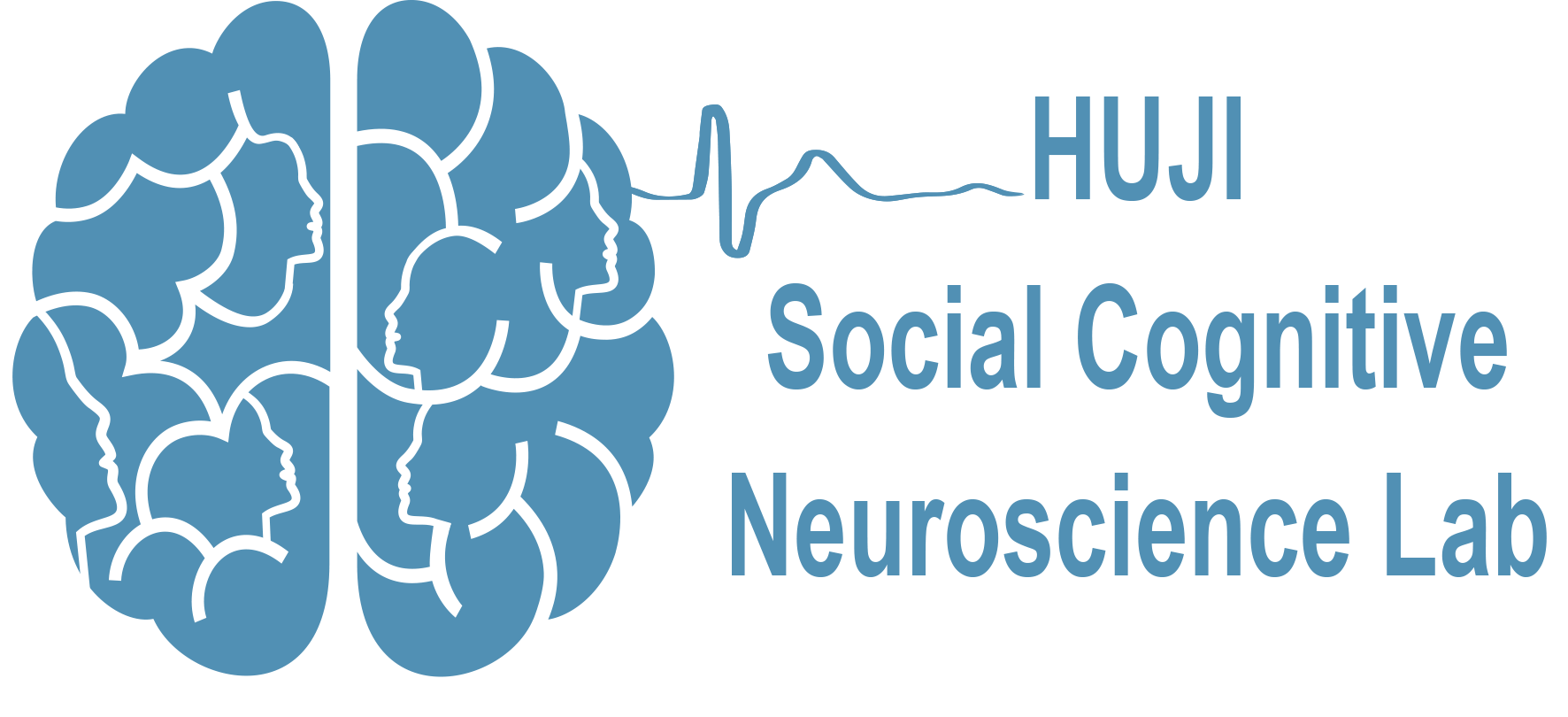Mairon, N., Nahum, M., Stolk, A., Knight, R. T., & Perry, A. . (2020).
Behavioral and EEG Measures Show no Amplifying Effects of Shared Attention on Attention or Memory.
nature,
10(1), 8458. Retrieved from
Publisher's VersionAbstractShared attention experiments examine the potential differences in function or behavior when stimuli are experienced alone or in the presence of others, and when simultaneous attention of the participants to the same stimulus or set is involved. Previous work has found enhanced reactions to emotional stimuli in social situations, yet these changes might represent enhanced communicative or motivational purposes. This study examines whether viewing emotional stimuli in the presence of another person influences attention to or memory for the stimulus. Participants passively viewed emotionally-valenced stimuli while completing another task (counting flowers). Each participant performed this task both alone and in a shared attention condition (simultaneously with another person in the same room) while EEG signals were measured. Recognition of the emotional pictures was later measured. A significant shared attention behavioral effect was found in the attention task but not in the recognition task. Compared to event-related potential responses for neutral pictures, we found higher P3b response for task relevant stimuli (flowers), and higher Late Positive Potential (LPP) responses for emotional stimuli. However, no main effect was found for shared attention between presence conditions. To conclude, shared attention may therefore have a more limited effect on cognitive processes than previously suggested.
Jospe, K., Genzer, S., klein Selle, N., Ong, D., Zaki, J., & Perry, A. . (2020).
The contribution of linguistic and visual cues to physiological synchrony and empathic accuracy.
Cortex,
132, 296-308. Retrieved from
Publisher's VersionAbstractThere is an ongoing debate concerning the contribution of different aspects of empathy to achieving an accurate understanding of others. In this study, we aimed to better comprehend the roles of experience sharing and mentalizing using a modified empathic-accuracy task. We analyzed the unique contribution of each of these mechanisms with an explicit cognitive report as well as an affective physiological synchrony measurement. First, we recorded the emotional autobiographical stories told by participants (“targets”, N = 28). Then, the targets watched their own videos as their heart rate (HR) was measured, and they reported on both a continuous and a discrete emotion scale what they felt while relaying the story. Next, we collected HR data from new participants (“observers”, N = 72) as they similarly rated the targets’ valence and discrete emotional states. In order to test the contribution of sensorimotor cues and contextual cues to empathic accuracy, observers viewed some videos with audio, others without audio, and listened to a third set of only the audio. We hypothesized that empathic accuracy—a cognitive measure that is a proxy for mentalizing and is operationalized by the correlation between a target’s reported emotions and an observer’s inference of those emotions—would be greater when linguistic information is present. We also hypothesized that physiological synchrony, a proxy for experience sharing, would be greater in the video-only condition, which was limited to sensorimotor cues to infer the other’s emotional state. Indeed, we found that empathic accuracy was greater when auditory information was present, and that HR synchrony was more prevalent when visual cues were presented alone. Having both information streams together did not enhance accuracy, yet it was the only condition in which both behavioral empathic-accuracy measures correlated with HR synchrony. This study provides evidence that separate experience sharing and mentalizing pathways are active in the same task.
Rum, Y., & Perry, A. . (2020).
Empathic Accuracy in Clinical Populations.
Frontiers in Psychiatry,
11, 457. Retrieved from
Publisher's VersionAbstractEmpathy, broadly defined as the ability to understand the other and to share others’ emotions, motivates prosocial behavior and underlies successful interpersonal relations. Dysfunctions in this ability may cause fundamental difficulties in social communication. Empathy has been measured in various ways, from self-report questionnaires to laboratory objective performance tests. Empathic accuracy (EA), i.e., the ability to accurately empathize, is measured using more complex and ecological paradigms, such as asking participants to infer filmed interactions, or having people narrate personal emotional stories then assessing the correspondence between the perceiver and the target of empathy as the criteria for empathic ability. This measure is particularly useful in the study of clinical populations, where deconstructing the multifaceted concept of empathy may contribute to a more complete understanding of specific clinical profiles. This paper presents a scoping review of the literature on EA in clinical populations, and on EA and clinical traits and states in nonclinical or high-risk populations. Following an exhaustive literature search, 34 studies were found eligible to be included in this review. The largest category was studies focused on EA in people with schizophrenia (31%; 11 papers), followed by studies focused on EA in autism spectrum disorders (ASD) and autistic traits in a nonclinical population (22%; 8 papers). Studies were also found on EA and depression tendencies, psychopathy, social anxiety, behavior disorders, and personality disorders, and a few other clinical conditions. The included studies varied on research aims, designs, sample sizes, and male:female ratios. The overall synthesized results suggest that EA is reduced in schizophrenia and ASD. In other clinical populations, the number of studies was very limited. We urge researchers to further examine EA in these less-studied populations. The review reveals a general underrepresentation of female participants in studies on EA in clinical populations. We suggest that future research address understudied clinical populations, such as those diagnosed with psychopathy. Subject, target, and situational variables should also be considered, with special attention to gender differences (and similarities), the association between EA abilities and adaptive functioning, and the study of individuals with clinical conditions as targets, not just observers, in EA tasks.

